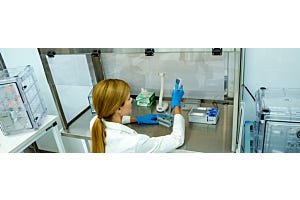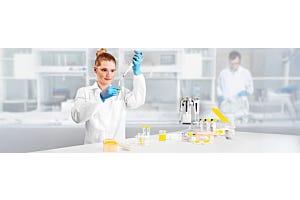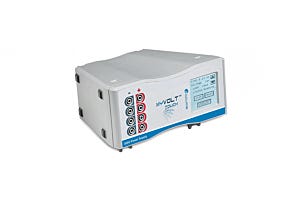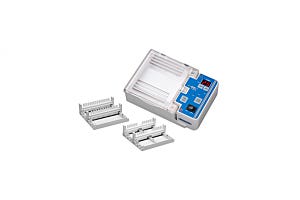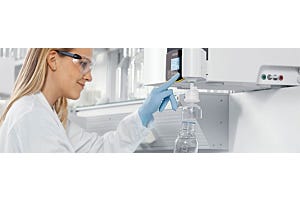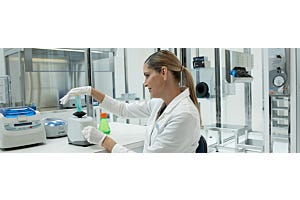Polymerase Chain Reaction (PCR), the amplification of DNA, is an established process used in molecular biology. PCR technology has made strides in medical and infectious disease diagnoses, forensics and research applications. Decisions about treatment options and clinical efficacy are often based on DNA and RNA analysis of patient cells. Ensuring proper contamination control guarantees that clinicians get the best possible results.
 DNA polymerase and PCR assays are highly susceptible to contamination. Given that PCR is used in many clinical diagnostic applications with multiple patient samples on the same plate, contamination can be carried through across thousands and millions of DNA sequence copies. If a contaminant is introduced early in the reaction, then the error is amplified in an exponential fashion that leads to false or inaccurate results.
DNA polymerase and PCR assays are highly susceptible to contamination. Given that PCR is used in many clinical diagnostic applications with multiple patient samples on the same plate, contamination can be carried through across thousands and millions of DNA sequence copies. If a contaminant is introduced early in the reaction, then the error is amplified in an exponential fashion that leads to false or inaccurate results.
The most common causes of PCR contamination:
- Incorrect lab set-up and improper workflow
- Operator contamination
- Sample separation failure
- Improper sterilization of lab equipment
Laboratory Set-Up for Optimum PCR Workflow
Creating a proper lab environment and establishing a unidirectional workflow are two ways to prevent PCR contamination. To ensure proper facilities control, quality assurance personnel will establish a documented standardized protocol specific to the size of their lab space and available equipment. Personnel should be carefully trained and provided with access to written procedures.
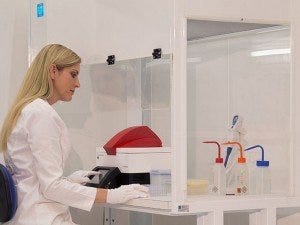
This unidirectional workflow involves the following 5 best practices:
- Establish separate work areas or rooms for each PCR reaction step
- NEVER return previously processed tubes to preceding work area or room
- Master-mix should be prepared and aliquoted in the reaction vessel and moved to an adjacent and segregated area
- DNA template must NEVER be present in the area where the master-mix is prepared
- Reaction tubes from completed amplifications should NEVER be stored with un-amplified samples or unused reagents
While large labs have the luxury of creating separate rooms within the facility for each PCR reaction, small labs use PCR hoods or similar dead-air boxes (hoods without an air blower) to create the separation needed for contamination prevention.
Avoiding Operator Contamination of PCR Workstation
The biggest contributors of contamination in any lab are operators. To mitigate this, it is important that operators observe the established unidirectional workflow and maintain proper lab gear. Follow these tips to eliminate operator contamination:
- Personnel must always wear gloves, and change them regularly
- Operators must practice due diligence in maintaining a clean work surface
- Operators must observe established unidirectional workflow protocol
PCR Hoods, Sterilization and Operator Safety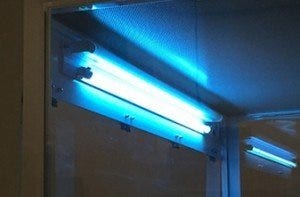
PCR hoods can be equipped with an anti-microbial UV lamp, which is operated at set intervals to sterilize the work environment. UV-C exposure can be harmful, so workers should be out of the room while the UV lamp is engaged. If this is not possible, however, lab personnel must ALWAYS wear proper protective gear when working under these lamps. It is important that hoods equipped with UV lamps are constructed of proper UV-resistant materials.
- PCR reactions should be performed in a separate PCR-reaction hood
- The entire hood work surface, as well as pipettes, should be sterilized with a 1:10 or 1:20 dilution of bleach followed by a rinse with 70% ethanol
- Each PCR-reaction hood should contain dedicated pieces of equipment (pipettes, centrifuges, plastic labware) that should not be removed and/or transferred to another hood
Recommended Pipettes in PCR Hoods
Choose positive-displacement pipettes with barrier tips to prevent carry-over from one sample to the next. These pipettes are ideal for working with volatile liquids and highly viscous samples because of their disposable micro-syringe tips. Positive displacement pipettes not only provide more accuracy, they also give superior sample protection compared to air-displacement pipettes.
Conclusion
Contamination in PCR reactions can be controlled by following basic lab best practices and incorporating some specialized techniques specific to sensitive PCR applications. Ideally, lab equipment used for studying genetic material should not be used for other experiments; even with proper cleaning protocol, there remains a chance of cross-contamination. Improve efficiency and accuracy by following detailed, documented protocol.
Read more about Terra Universal’s PCR Workstations and Equipment.
Photos by gemmerich,




